A little bit of music: The History of Jazz, music as freedom of expression!
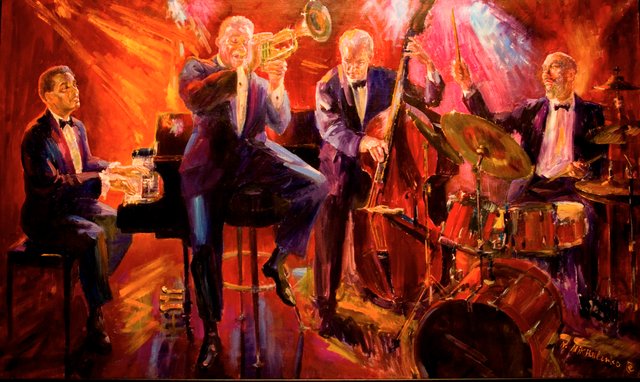
Hello steemit friends, today I want to tell you a bit about music, one of my favorite genres is not so from this era, but for me it has a sound so powerful that it transcends generations, and when you listen to it, it changes your mood immediately, so me the sound that has more mutations, but when you pay enough attention you can find the sweetest, strongest melodies or even a huge sadness, when you listen * JAZZ * your moment freezes at this moment.
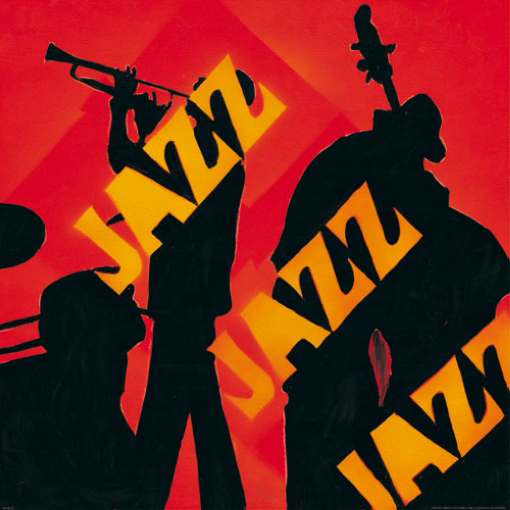
The Origin of the word
The American Dialect Society named the term 'jazz' as the word of the 20th century, a remarkable fact because the origin of the expression is still unknown. Some point out that it has to do with an African-American slang term 'jasm', which means speed or energy.
Another theory arises from its spelling that could have been born from jasm, referring to the perfume of jasmine that the prostitutes used in the famous district of Newville. This is because this type of music was played in brothels.
A little history
Jazz is one of the most relevant musical phenomena of the 20th century. Nowadays, when we speak of Jazz, we refer to a musical genre that is constantly changing, a very permeable style that has undergone immense mutations but maintains certain characteristics that make it recognizable and that are the fruit of its origins and evolution.
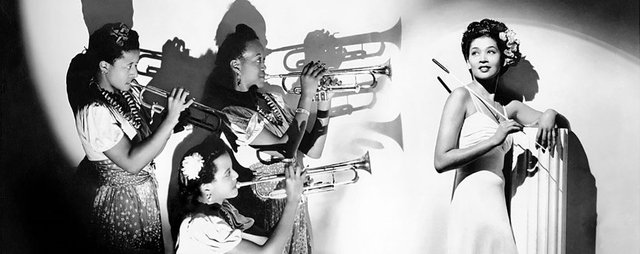
Jazz is a genre of music that has its origins in various African American rhythms and melodies. It emerged at the end of the 19th century in the United States and, over the years, expanded throughout the world.
Jazz is said to have been born on the Mississippi River in New Orleans. Others maintain that jazz music was born more or less simultaneously in different parts of the US and with many sources: religious music, the old American folk music, the music of the minstrel shows (musicians with black tinted faces in vaudevilles), songs and dances of slaves of African origin, ragtime piano, street bands. The ragtime piano and the traveling bands are the sources most tied to the primitive jazz, the traditional one, that moves away only a point of the music of the marches.
On March 6, 1913, the "San Francisco Bulletin" was the first means of communicating the term jazz in a newspaper article; on that occasion, its purpose was to refer to the music played by an army orchestra. The first album that included self-defined music as jazz, on the other hand, was edited in 1917 by the Original Dixieland Band.
The main characteristic of jazz is that it is not attached in a structured way to a score, but is based on improvisation and free interpretation. The usual thing, however, is for musicians to play a familiar theme within a certain harmonic framework, and let their imagination fly to decorate it and modify it according to inspiration.
The jazz as a musical genre is art, it is harmony, it is love and passion., for me one of the most exalted musical genres that exists.
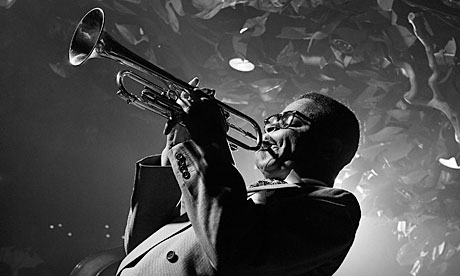
In the USA there were slaves in the northern colonies, and when labor was needed in the southern ones, they began to populate these colonies. It was from these populations of African slaves that spirituals, blues and the first sounds of jazz music emerge.
The jazz was a moment of rebellion
Since the dance was prohibited in the Protestant religious services, the blacks "mocked" this prohibition by playing clapping and rhythmically moving the body while singing hymns. All the descriptions of the time speak of their strong emotional power. From here arose spontaneous melodic ideas. The stanzas recited by a soloist and then sung by the group of hymns. This was adopted within the African tradition of solo responsorial singing / chorus.
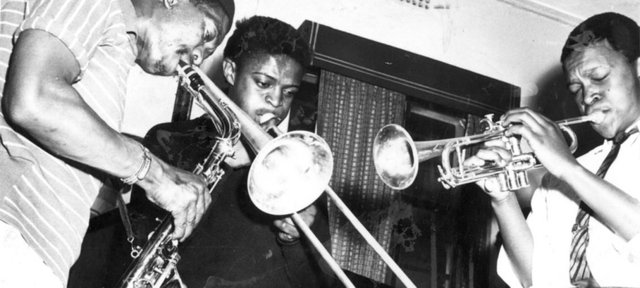
Collective work songs (port stevedores, prisoners, workers, railroad) are also cited as an occasion in which they implemented partially inculturated music. The good guides were very valued.
Mardi Grass, the last day of Carnival in New Orleans, is also mentioned, with music and dances, especially those of Franco-Spanish origin that participated in the parades of gangs that were organized, in rhythm of 2/4 and 6/8 . Melodies like the Tiger Rag, jazz classics, would come from that context. Congo Square, in Nva Orleans, origin of hymns to rhythm of blues, and so many famous interpreters like Louis Amstrong, King Oliver, Jelly Roll Morton, even later like Al Hirt and Pete Fountain.
The form of jazz performance was not a commercial rhythm
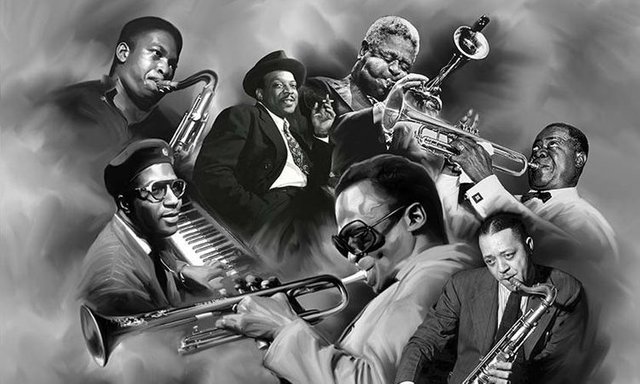
This freedom of jazz artists explains why the genre does not register massive sales. The public is more accustomed to consuming music subordinated to the melody and structured with a refrain, as is the case of pop.
The most common interpretation of jazz includes a solo instrument (like a trumpet) accompanied by a rhythm section (drums, bass, double bass) and harmonic instruments (piano, guitar). Jazz can be performed by soloists as well as trios, quartets or the so-called big bands, of multiple members.
.jpg)
After the emancipation of the slaves, many settled in New Orleans and many began to play, without formal musical training, the blues and spirituals, but also in the bands of the city. Around the burials the bands played fast melodies in 2/4, like "Did not He Ramble or When the Saints Go Marching In". The bands abounded in New Orleans and between them established street competitions very accused. Many future jazz musicians played in them, although that was not yet jazz.
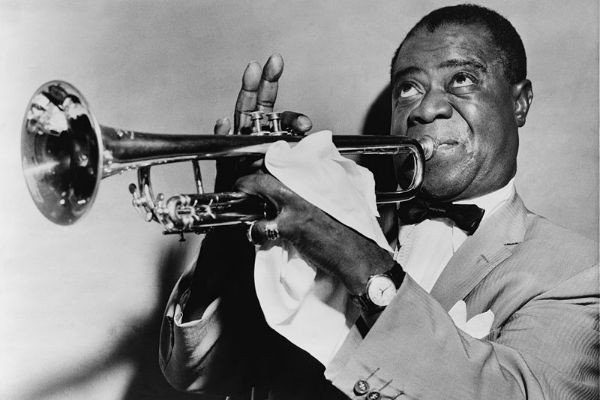
So, what step had to be taken, can we say, for jazz to emerge? When and how did jazz emerge? We quote ideas (we do not quote them literally except quotes) from Gunter Schuller in his book The Jazz. Its roots and its development. Pp 80 and ss.
There is no starting date for jazz as definite and autonomous music. It is usually located between 1895 and 1917, the year in which the term jazz was generalized and in which the Original Dixieland Jazz Band made its first recordings. It also seems clear that early jazz emerged in many places in the United States, not just in New Orleans.
In short, New Orleans musicians played all kinds of music and only part of it contained elements that soon became primitive jazz. There was a kind of marginal music that was on the edge of jazz. The music that later began to be called jazz was only interpreted marginally, depending on the place and social extraction where it was played.

All began recording in 1923, which is also the year that Bessie Smith recorded her first blues records Original dixieland jazz band after Mamie Smith unleashed blues fashion in 1921. That's when jazz began to unify: when It became the consumer item demanded in the entertainment areas of Chicago, New York, Los Angeles, Kansas City and when - almost at the same time - the records of the Original Dixieland Jazz Band began to spread.
Something that has identified jazz music is that it always has that spirit of freedom and improvisation that I love! What I value most about this is the ability of musicians to express their emotions through this rhythm, and the vocal quality of their singers.
From 1910 this genre to reign, a brief temporal description of it is:
The jazz in 1910
The precursor genres of jazz were the following: the dixieland, born around 1910, played by groups composed of three basic instruments: the tuba, the cornet and the saxophone plus the drums, the bass, the clarinet and the trombone that were in charge of the rhythmic base; and later the ragtime, whose maximum exponent was Scott Joplin. This last genre was based on a particular mixture of accents and syncopations, being usually performed by a pianist.
The jazz in the 20s
In Saint Louis there was a custom of accompanying funerals with band music. They did it slowly, sadly and slowly when going to the cemetery and happy when they returned, causing people to dance behind them. So much popularity acquired these bands that they were hired in brothels to play dance music. In 1917, the authorities closed the storyville brothels in New Orleans, where they performed, and the bands emigrated north to the cities of Chicago and New York, where they were hired by clubs that were mostly owned by the mafias. thus the expansion of jazz.
(This song was coined that name, since that was the name of this teacher's favorite guitar!)
These bands consisted of six members: piano, banjo or guitar, tuba or double bass in the rhythm section; and in the melodica, trombone, trumpet and clarinet. The jazz of this decade is characterized by the rhythmic pulsation in the weak times, the rhythmic accents move towards the second and fourth time, especially in the drums.
The Jazz in the 30s
In the thirties, jazz achieved a high professional level and the great soloists appear who improvise following the appropriate harmonic scheme for each song. The Swing, the Big Bands and mythical characters such as Duke Ellintong, Count Basie, Benny Goodman and Joe King Oliver had arrived. Oliver's disciple, Louis Armstrong, was one of the great revolutionaries of this genre. Jazz "had dignified" and was also played by whites. This was the dance music that was heard in the great halls as well as in the small American slums of the time.
The thirties are characterized by swing, a genre mainly due to the creative talent of trombonist Glenn Miller. Also contributed to the expansion of the swing Benny Goodman, great clarinetist and director, and Fletcher Henderson, pianist and arranger that led to the development of the Big Bands. This era is characterized by the improvised rhythms of blues bases and in the riff (repetitive phrase) and by the rise of the singers.
The jazz in the 40s
After the swing era, jazz was known and appreciated all over the world, recognized even by classical composers such as Stravinsky. However, the term swing enjoyed a bad reputation among musicians: it was considered that only the less talented professionals engaged in this type of commercial music, so that the most serious musicians - like Duke Ellington - were moving away from the style. The decline of the big bands of swing gave rise to a radically different new type of music, whose only features in common consisted of a similar instrumentation and the interest in improvisation, the Be Bop. The birth of the style took place in 1941 when Dizzy Gillespie, Milt Hinton, Charlie Parker, Thelonious Monk and Kenny Clarke met at the Minton's Playhouse in New York for a series of informal concerts. Dizzy Gillespie was one of the leaders of the movement, with a trumpet style that perfectly summarized the characteristics of the new music and a series of songs that soon became part of the basic repertoire of bop musicians, such as A Night In Tunisia or Salt Peanuts. . Charlie Parker was the other great father of the bebop, introducing a new language of improvisation, extending the melodic aspect and the rhythmic range of jazz until that moment. With an amazing emotional style that was immortalized in classics such as Yardbird Suite, Ornithology, Donna Lee, Billie's Bounce or Anthropology, among many others.
Some big bands, like those of Charlie Barnett, Woody Herman, Lionel Hampton or Stan Kenton, were able to adapt their sound to the new demands, while others, like Earl Hines, established bridges between the old and the new sound. Only a few managed to become real big bands of be-bop, as is the case with the orchestras of Boyd Raeburn, Billy Eckstine and Dizzy Gillespie. A characteristic feature of the music of this period is the diminished fifth interval used by the soloists. In addition, the drum stops playing a regular rhythmic accompaniment and becomes an instrument of more autonomy within the set, something that will also happen with the rest of the instruments.
The jazz in the 50's
The formal birth of the cool movement took place in 1948 with the publication of the album Birth of the Cool by Miles Davis. This record work was a self-defining manifesto and one of the most influential recordings in the history of jazz. The new style was derived directly from the bebop, but it was a more cerebral music, whose main objective was the establishment of a "calm and meditative" atmosphere. The cool jazz was particularly popular among white musicians like Lennie Tristano-in part because of its distancing from the African roots of jazz-but it also found a gap between the preferences of black musicians who became simple entertainers to take a more active role and serious in the search for his musical identity. Gunther Schuller was the official initiator of the third stream, a current that established a bridge between classical music and jazz. A paradigmatic example was his Jazz Abstractions (1959). Among its main representatives also has Bob Graettinger and Gil Evans who produced, within this style, three important musical works: Gil Evans and Ten (1957), Out of the Cool (1959) or Into The Hot (1961). Bill Evans, along with Scott LaFaro and Paul Motian, also introduced a new sound in the jazz trio influenced by European classical music. Another prominent musician of this current was George Russell who excelled as an interpreter of modal themes.
As a reaction to bebop's intellectualism, the hard bop musicians claimed the return of jazz to its origins, with a special emphasis on the energy and spontaneity of music. The rhythmic element was reinforced and the solos derived from the language of bebop musicians acquired more strength and vitality, forming an aggressive and intense music. In fact, the adjective hard (hard) has in this expression the connotation of intense. It had special incidence among the musicians of the East Coast and is especially linked to the black musicians of the cities of the Great Lakes, like Chicago or Detroit. They "liked full-fledged improvisations, warm sounds, phrases with pure angles and explosive rhythms." Intimately related to hard bop, a jazz style was developed based on the use of blues structures in slow or medium tempo, with a firm and sustained beat, with interpretive emotion, which was called funky or, later, soul jazz .
The jazz in the 60s
In the early sixties there was an irresistible rise of free jazz that, in parallel, received a large number of summarizable rejections in a single sentence: "this is not music". Critics that, on the other hand, came not only from the public or from specialized journalists, but from jazz musicians, such as Roy Eldridge or Quincy Jones. By the middle of the decade, practically all young jazz musicians were influenced by the "free". By 1965, free jazz had become a richly articulated form of expression that encompassed all the themes and commanded all the avenues of jazz development. However, from 1967 onwards, a clear recession of public favor regarding free jazz began to be appreciated.
A certain number of bop musicians had developed more advanced improvisation concepts in the late 1950s, performing a modal jazz directly driven by figures such as Miles Davis or, most especially, John Coltrane as early as the 1960s. "Sound sheets", as the critic Ira Gitler called the sound of the saxophonist's quartet, opened the way to a style that has been called post-bop. This one adopted to the experiences hard bop a good number of the innovations that had brought the free jazz, becoming the line of main development (mainstream) of the modern jazz, conductive thread until arriving at the neo bop or neo-traditionalism, of the years 1980 , headed by Wynton Marsalis. With some exceptions, like Bill Evans, the Blue Note record label picked up the main musicians of the style: Wayne Shorter, McCoy Tyner, Herbie Hancock or Lee Morgan.
The jazz in the 70's
The launch in 1970 of Bitches Brew, an album by Miles Davis that included Tony Williams, Ron Carter, Herbie Hancock, Wayne Shorter and John McLaughlin, among others, marked a new revolution in the sound of jazz, introducing an instrumentation and rhythmic schemes closer to rock and marking the beginning of a new genre that would later receive the name jazz fusion. The influence of the rock groups that were experimenting with jazz at the time finished profiling a genre that would later give rise to many other sub-styles, being particularly evident in aspects such as the instrumentation of the new jazz rock bands.
The jazz musicians of the seventies integrated different musical cultures into jazz. This mix of genres, I create jazz-rock, Latin jazz, Afro-Cuban jazz, flamenco jazz, among others. With the exception of the pianist Keith Jarret, the jazz players of this era used electronic instruments. The jazz characteristic of the seventies was the fusion, but the jazz style of the previous decades was continued interpreting for a minority audience.
The jazz in the 80s
The rise of "neo-traditionalism" that took place with the arrival of the 1980s marked the highest point of the crisis that had affected jazz since the massive popularization of rock in the 1960s. Jazz represented North American blacks the popular alternative to classical music, but the moment it began to drift, first towards free jazz and then towards the different mergers that took place in the 1970s, it moved further and further away from its origins, entering an identity crisis that at the end of that decade had not yet been resolved.
In that period the term "jazz" used to be identified, simply with instrumental music, white musicians were achieving more success than blacks and the overall creative panorama was quite discouraging. However, the arrival of neo-traditionalists changed the order of things: instead of championing a new revolution in the genre, they claimed a return to their origins by moving the terms of the debate from the free jazz / jazz fusion dichotomy to the debate between the defenders of the purity of the style (neo traditionalism) and the supporters of its evolution.
The 90's jazz to the present
From the 90s, this musical genre coexisted with others such as rock, pop, blues, etc. The first jazz musicians of these times were the saxophonist John Zorn; the guitarist Elliot Sharp, whose compositions are an example of synthesis of dissonance, repetition and improvisation; Eugene Chadbourne, who integrated elements of avant-garde jazz with white music of rural origin; the guitarist Henry Kaiser; the cellist Tom Cora; Irish guitarist Christy Doran and Jewish drummer Joey Baron. The New York revolution was felt both in the type of material in which the musicians were embarking and in the type of techniques they used to improvise, picking up influences of all kinds and fusing them without conceptual limitations. Thus, the saxophonist Ned Rothenberg was established among the first line of the new generation of improvisers. Other musicians, such as the trombonist Jim Staley, or Tom Varner, a virtuoso of the horn, were among the most original of his generation. Much more known, the guitarist Bill Frisell assimilated in his work influences of jazz and rock, but also folk, marching bands music or even ecclesiastical music. Soloists such as cellist Hank Roberts, or Mike Shrieve (former drummer of Santana) also put their integrating capacity on the front line.
The second half of the 1990s saw a revival of music for big bands, a trend that had originated in the previous decade, in the work of musicians such as bassist Saheb Sarbib or cornetist Butch Morris. The keyboardist Wayne Horvitz developed his idea of "progressive camera jazz", while the multi-instrumentalist veteran Marty Ehrlich picked up the influence of traditional jazz, improvisation, light music and avant-garde classical music, and the American Maria Schneider, a student of Gil Evans, resurrected the style of his teacher in various albums for orchestra. Beyond the borders of New York, a series of artists continued to appear in the last years of the last century, who would develop the bulk of their work - in which they reworked the concepts established by generations of former jazz musicians in multiple and creative ways - and in the new century. For example, bassist Michael Formanek had debuted in 1990, and Argentine Guillermo Gregorio or Canadian Paul Plimley, had already released records in the middle of the same decade. Yugoslavian Stevan Tickmayer, for his part, co-directed The Science Group, an attempt to merge chamber music with improvised music. Other outstanding musicians of this first generation of the new century are Greg Kelley and the Canadian violinist Eyvind Kang, one of the most eclectic musicians of his generation. Also at the beginning of the 2000s, the confirmation discs of musicians such as the trombonist Josh Roseman, the bassist Ben Allison, the saxophonist David Binney, and the pianist Jason Lindner, all of them Americans, appeared. The work of the Frenchman Erik Truffaz and the Israeli trumpeter Avishai Cohen also stand out. The revolution that electronic music had brought also influenced the development of jazz. A new generation of improvisers emerged who came from the tradition of free jazz but who picked up the influence of classical avant-garde and electronics: Ben Neill, guitarist and keyboard player Kevin Drumm, Swiss percussionist Günter Müller or Miya Masaoka, of Japanese origin but born in Washington DC Other creators, such as Tyondai Braxton or Norwegian trumpeter Nils Petter Molvær experimented with the manipulation of orchestral loops. Others, like Greg Headley, electronically manipulated the sounds of their instruments. Finally, groups like Triosk made important contributions in the same direction. In the field of jazz rap, which has already developed considerably in the last decades of the 20th century and the beginning of the 21st century, a large number of works are produced by groups and musicians coming from hip hop, such as Kanye West, Crown City Rockers, Nujabes, A Tribe Called Quest, Madlib, the English duo The Herbaliser, or the French Hocus Pocus, among others.
I hope you enjoyed my compilation of information, and enjoy the majestic music that I have left in the post, have a happy day
Source: YouTube, tomajazz and fahrenheitmagazine.
